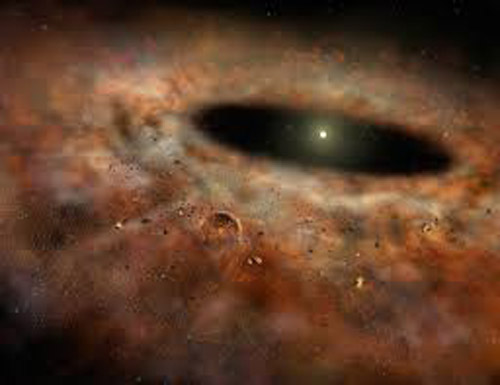
Where were Jupiter and Saturn born?
Islamabad: New work led by Carnegie’s Matt Clement reveals the likely original locations of Saturn and Jupiter. These findings refine our understanding of the forces that determined our Solar System’s unusual architecture, including the ejection of an additional planet between Saturn and Uranus, ensuring that only small, rocky planets, like Earth, formed inward of Jupiter.

In its youth, our Sun was surrounded by a rotating disk of gas and dust from which the planets were born. The orbits of early formed planets were thought to be initially close-packed and circular, but gravitational interactions between the larger objects perturbed the arrangement and caused the baby giant planets to rapidly reshuffle, creating the configuration we see today.
“We now know that there are thousands of planetary systems in our Milky Way galaxy alone,” Clement said. “But it turns out that the arrangement of planets in our own Solar System is highly unusual, so we are using models to reverse engineer and replicate its formative processes. This is a bit like trying to figure out what happened in a car crash after the fact — how fast were the cars going, in what directions, and so on.”
Clement and his co-authors — Carnegie’s John Chambers, Sean Raymond of the University of Bordeaux, Nathan Kaib of University of Oklahoma, Rogerio Deienno of the Southwest Research Institute, and André Izidoro of Rice University — conducted 6,000 simulations of our Solar System’s evolution, revealing an unexpected detail about Jupiter and Saturn’s original relationship.
Jupiter in its infancy was thought to orbit the Sun three times for every two orbits that Saturn completed. But this arrangement is not able to satisfactorily explain the configuration of the giant planets that we see today. The team’s models showed that a ratio of two Jupiter orbits to one Saturnian orbit more consistently produced results that look like our familiar planetary architecture.
“This indicates that while our Solar System is a bit of an oddball, it wasn’t always the case,” explained Clement, who is presenting the team’s work at the American Astronomical Society’s Division for Planetary Sciences virtual meeting today. “What’s more, now that we’ve established the effectiveness of this model, we can use it to help us look at the formation of the terrestrial planets, including our own, and to perhaps inform our ability to look for similar systems elsewhere that could have the potential to host life.”
The model also showed that the positions of Uranus and Neptune were shaped by the mass of the Kuiper belt — an icy region on the Solar System’s edges composed of dwarf planets and planetoids of which Pluto is the largest member — and by an ice giant planet that was kicked out in the Solar System’s infancy.
